Expedition 1 crew nears the end of training; shuttle crews prepare for International Space Station (ISS) assembly
With just one month to go before their historic launch as the first crew to live and work aboard the International Space Station (ISS), the Expedition 1 crewmembers and their backups neared the end of their preflight training in Russia. Commander William M. Shepherd of NASA, Flight Engineer Sergei K. Krikalev, and Soyuz Commander Yuri P. Gidzenko, of Roscosmos as well as their backups Kenneth D. Bowersox of NASA, Mikhail V. Tyurin, and Vladimir N. Dezhurov of Roscosmos completed several final simulations. At NASA’s Kennedy Space Center (KSC), workers prepared the space shuttle Discovery and its cargo element for an October assembly flight while the mission’s seven-member crew participated in a countdown dress rehearsal. The Joint Airlock Module, added to ISS in 2001 to provide it with an autonomous spacewalking capability, arrived at KSC for preflight processing.
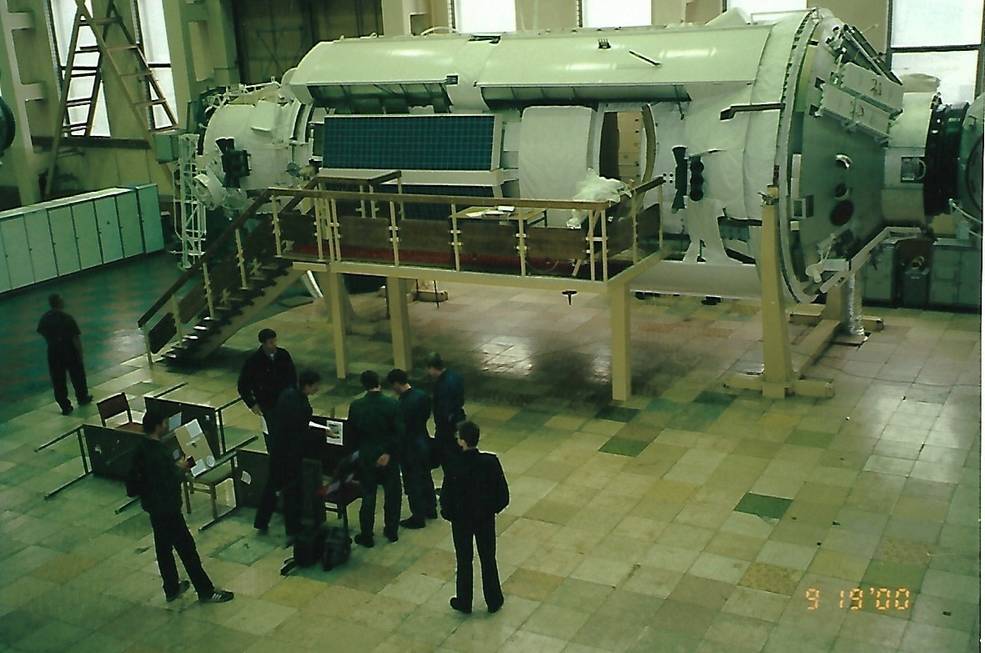
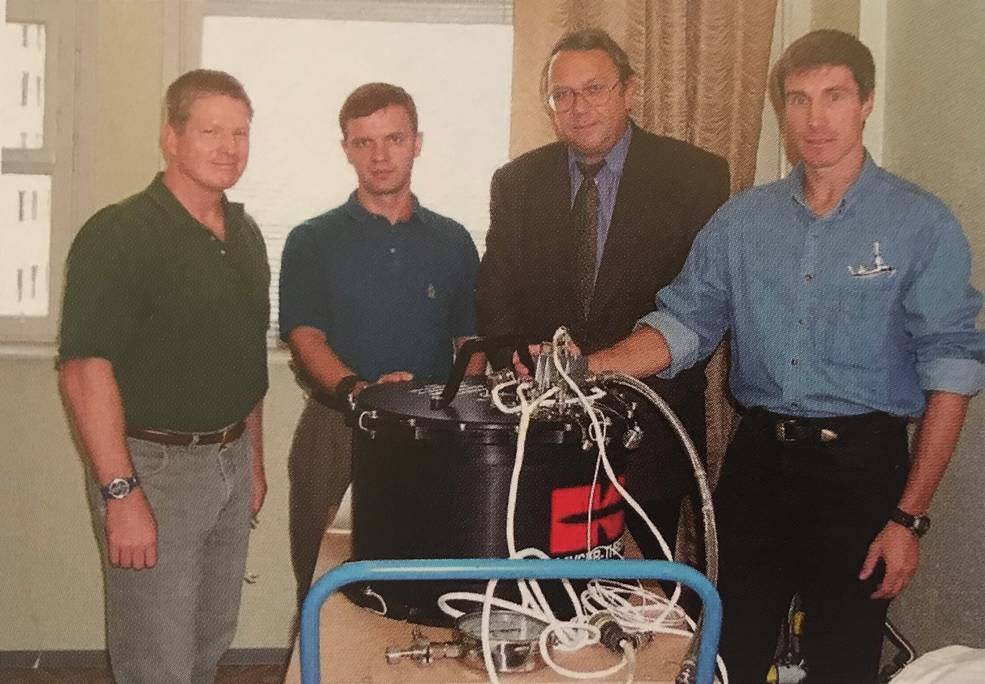
Left: Expedition 1 crewmembers in front of the Zarya module trainer at the Gagarin
Cosmonaut Training Center (GCTC) in Star City. Photo Credit: Debbie Trainor. Right: Final
familiarization with the Plasma Kristall-3 (PK-3) instrument in Moscow with Commander
William M. Shepherd of NASA, Soyuz Commander Yuri P. Gidzenko of Roscosmos,
Academician Vladimir Fortov, and Flight Engineer Sergei K. Krikalev of Roscosmos.
Photo Credit: Institute of High-Energy Densities, Russian Academy of Sciences.
At the Gagarin Cosmonaut Training Center (GCTC) in Star City outside Moscow, the Expedition 1 crewmembers completed some of their final training sessions and took their exams on various Soyuz spacecraft and ISS Russian segment systems. They completed their final spacewalking practice sessions in the GCTC Hydrolab training pool. The training culminated with an all-day simulation of Russian segment activities on Sept. 30 and integrated simulations in early October. As part of their science program training, on Sept. 11 Shepherd, Gidzenko, and Krikalev completed their final familiarization with the Plasma Kristall-3 (PK-3) experiment at the Institute of High-Energy Densities (IHED) of the Russian Academy of Sciences. The joint German-Russian investigation, led by Academician Vladimir Fortov of IHED, sought to study the formation and behavior of plasma and dust crystals in microgravity. The experiment launched to ISS on the Progress M-44 cargo vehicle on Feb. 26, 2001. The crew installed it in the Zvezda module’s transfer compartment where Krikalev conducted the first experiment session on March 2. After completing its training, the crew earned a well-deserved preflight vacation the week of Oct. 10, prior to fulfilling ceremonial prelaunch activities in Moscow and then flying to Baikonur to conduct fit checks with their spacecraft.
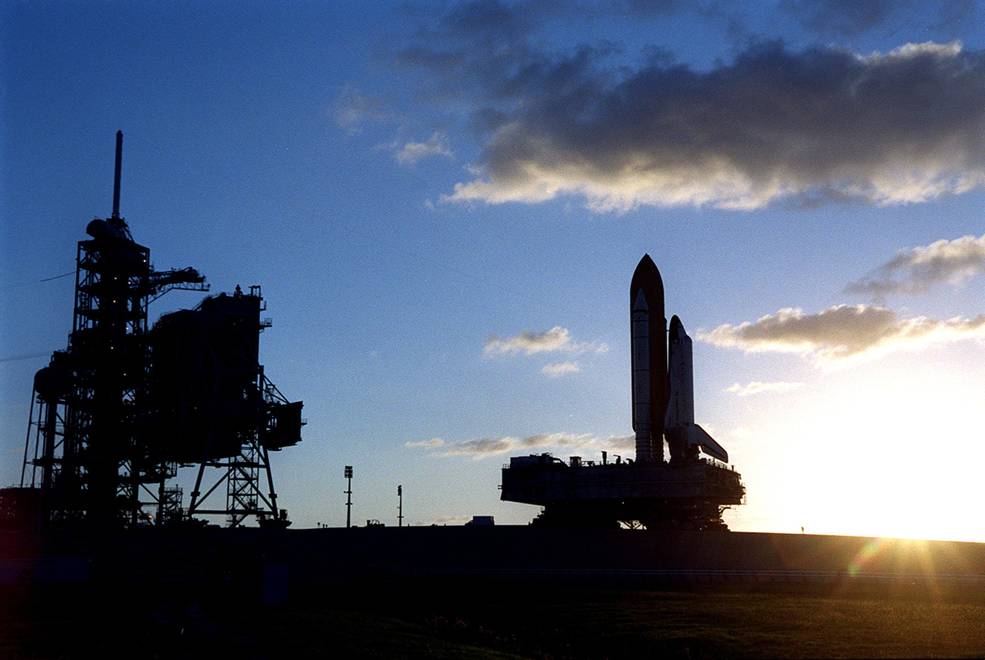
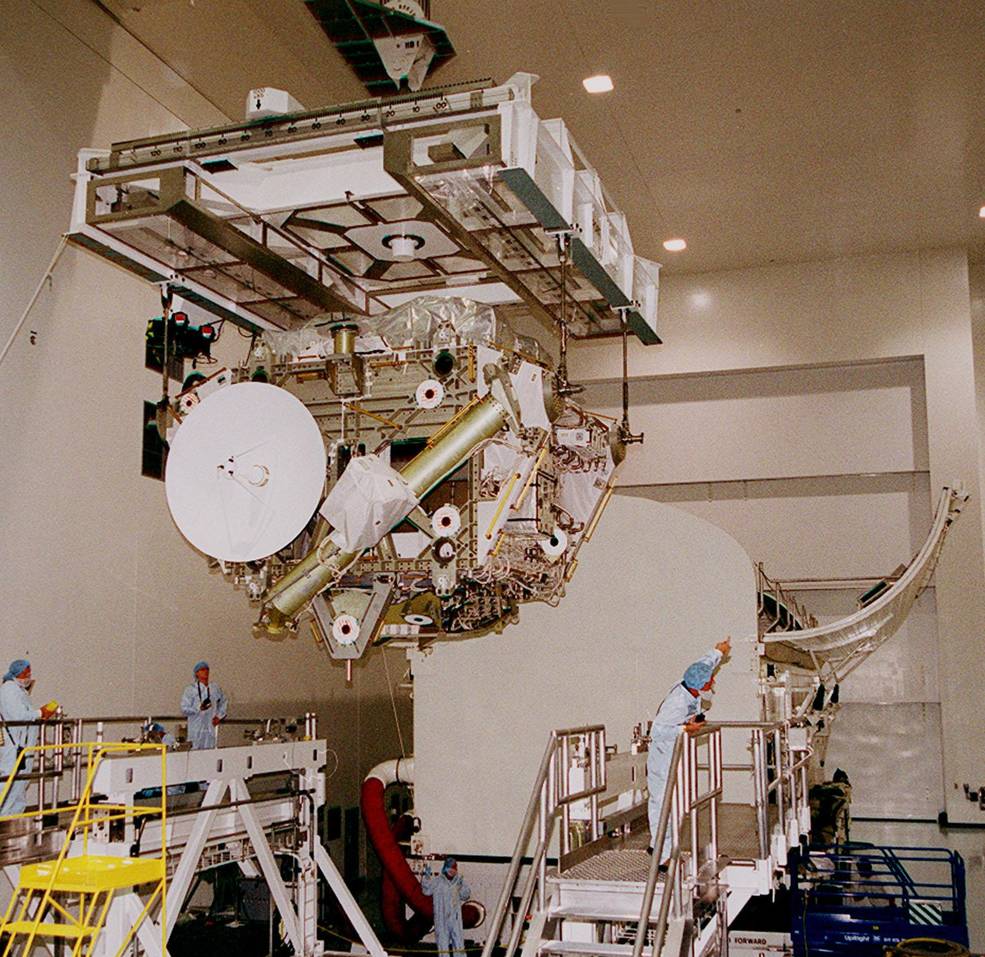
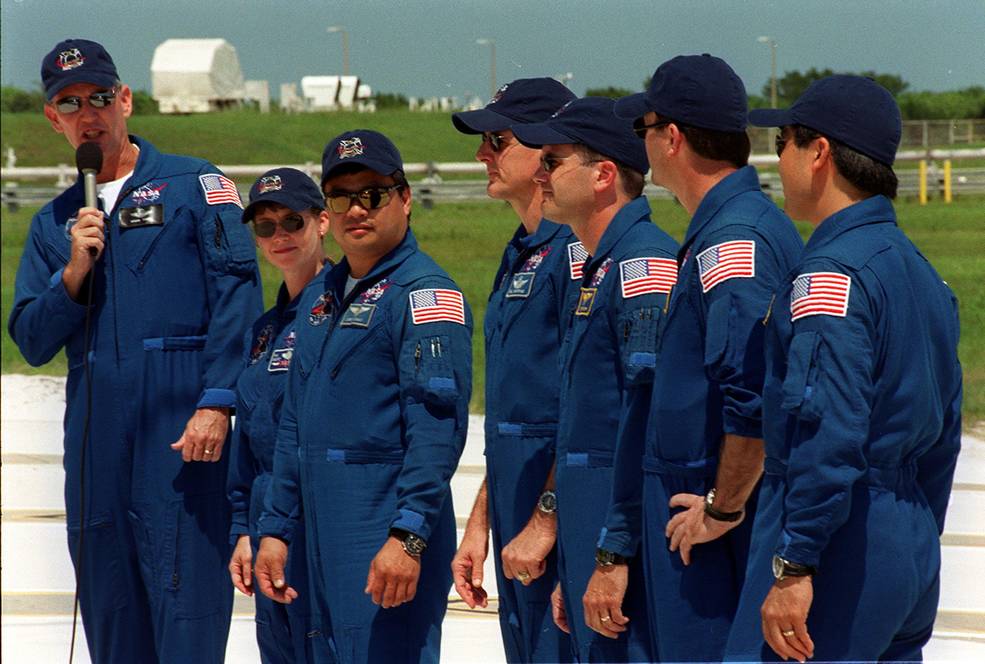
Left: Space shuttle Discovery rolls out to Launch Pad 39A at NASA’s Kennedy Space Center (KSC).
Middle: Workers prepare the Z1 truss for transfer to the launch pad. Right: The STS-92 crew of Commander
Brian Duffy, left, Pilot Pamela A. Melroy, Mission Specialists Leroy Chiao, Williams A. McArthur, Peter J. “Jeff” Wisoff,
Michael E. Lopez-Alegria, and Koichi Wakata at KSC for the Terminal Countdown Demonstration Test (TCDT).
On Sept. 10, workers rolled space shuttle Discovery from the Vehicle Assembly Building to Launch Pad 39A in preparation for the STS-92 assembly flight. The crew of Commander Brian Duffy, Pilot Pamela A. Melroy, and Mission Specialists Leroy Chiao, William S. McArthur, Peter J. “Jeff” Wisoff, Michael E. Lopez-Alegria, and Koichi Wakata travelled to KSC on Sept. 13 to participate in the Terminal Countdown Demonstration Test (TCDT) the next day, a final dress rehearsal for the October launch. During their mission, the astronauts installed the Z1 truss onto the zenith port of the Unity connecting module, also known as Node 1, and the Pressurized Mating Adapator-3 onto its nadir port during four spacewalks. STS-92 was the last shuttle flight to dock with an uncrewed ISS.
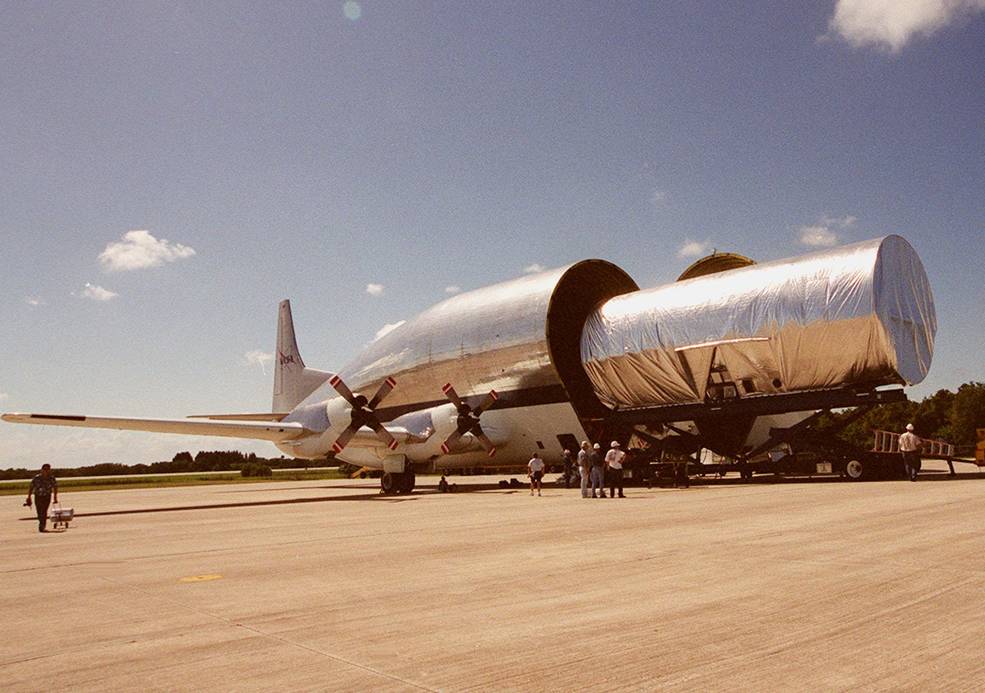
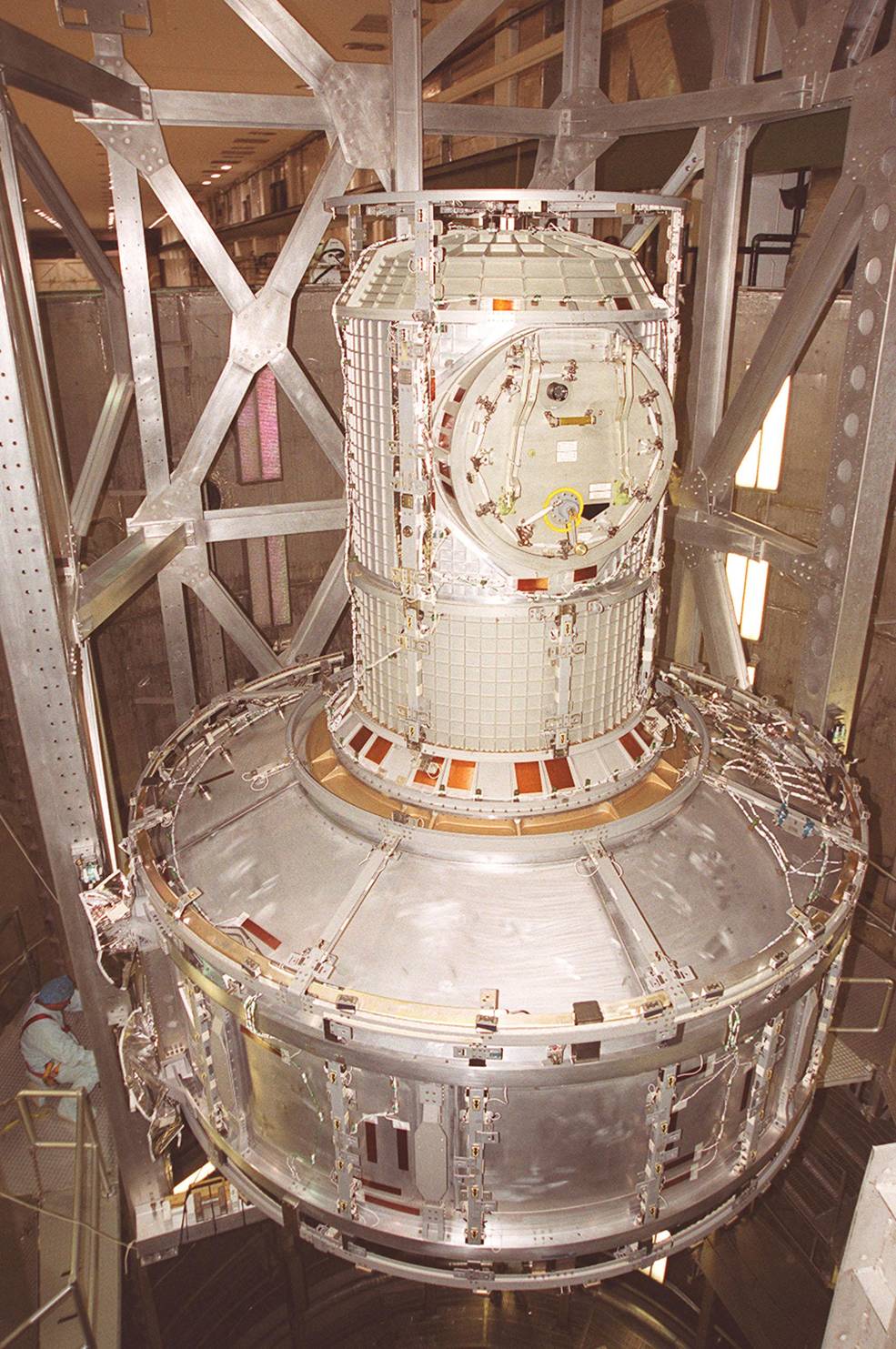
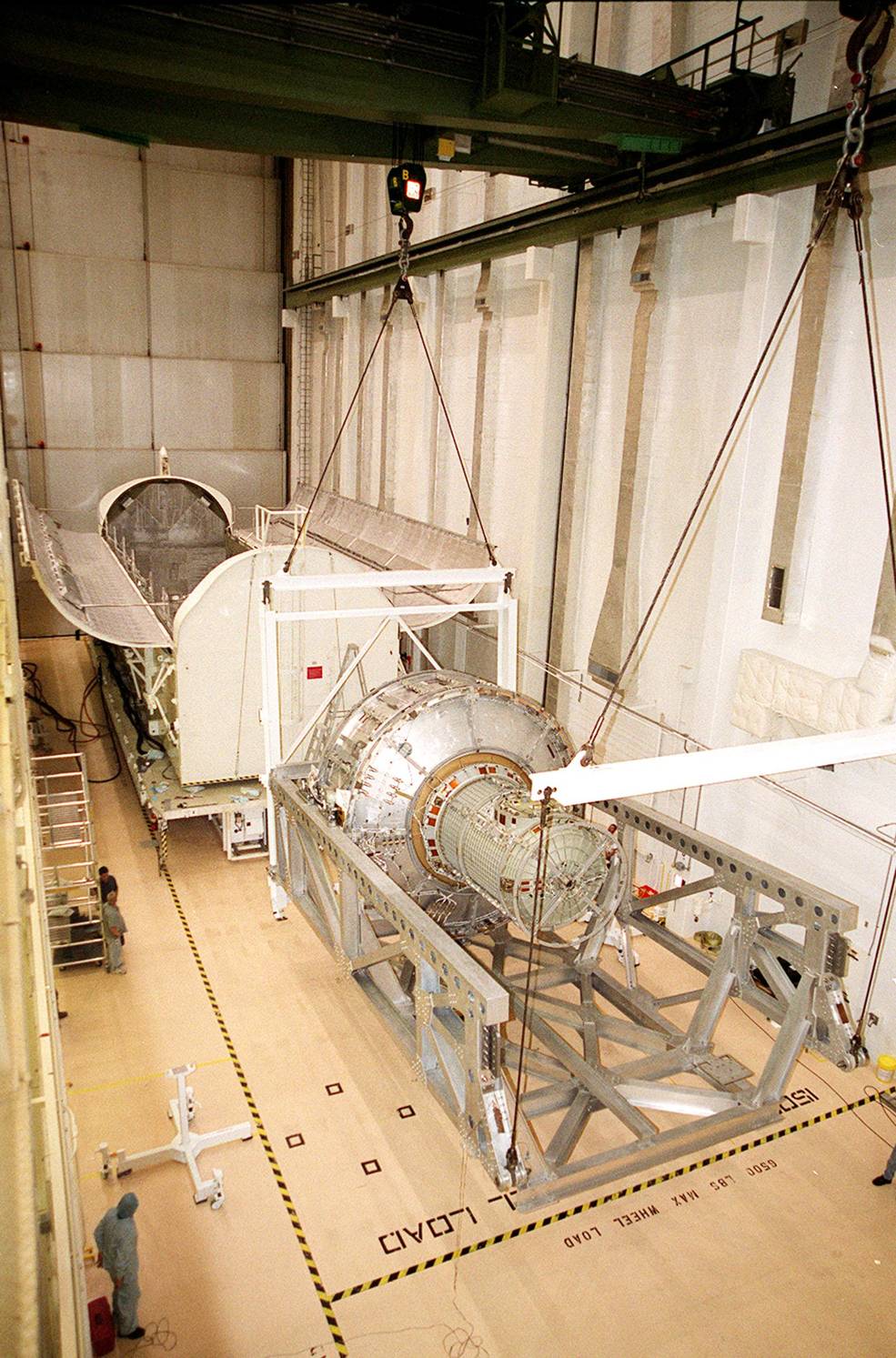
Left: Workers remove the Joint Airlock Module from the Super Guppy transport aircraft at NASA’s
Kennedy Space Center (KSC). Middle: The Joint Airlock Module in the vacuum chamber for pressure
integrity testing. Right: Workers prepare the Joint Airlock Module for loading into the payload canister.
The Joint Airlock Module, then scheduled for launch in May 2001, arrived at KSC on Sept. 11, 2000, transported from the agency’s Marshall Space Flight Center in Huntsville, Alabama, by NASA’s Super Guppy aircraft. The module provides crewmembers with an independent means of conducting spacewalks from ISS without relying on a docked space shuttle. After its arrival at KSC, workers delivered the airlock to the Operations and Checkout Building for vacuum chamber testing. Following successful completion of the vacuum test, workers moved the airlock to the Space Station Processing Facility for further prelaunch preparation and checkout. Manufactured by The Boeing Co., the massive, spindle-shaped airlock is 20 feet long, has a diameter of 13 feet, and weighs six and a half tons.
To be continued…





















